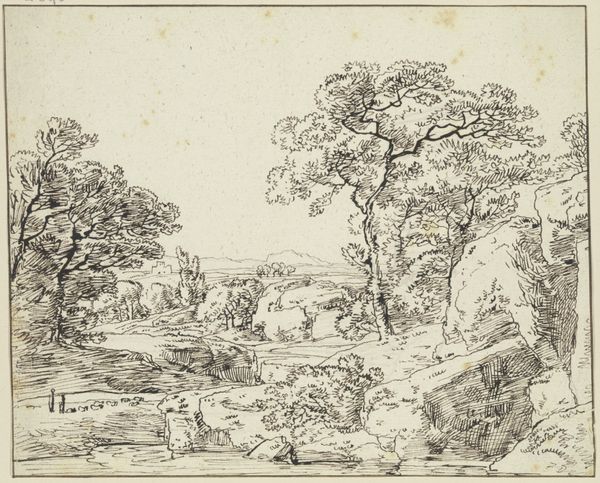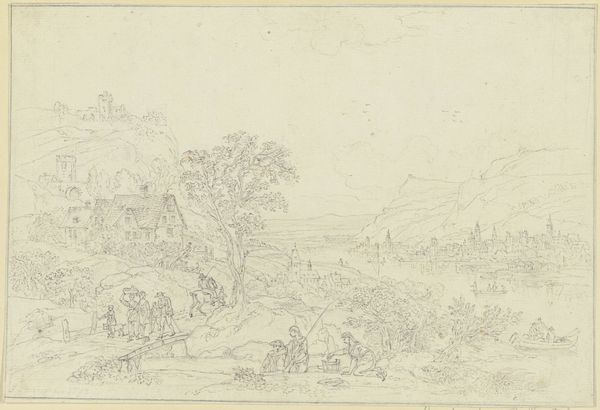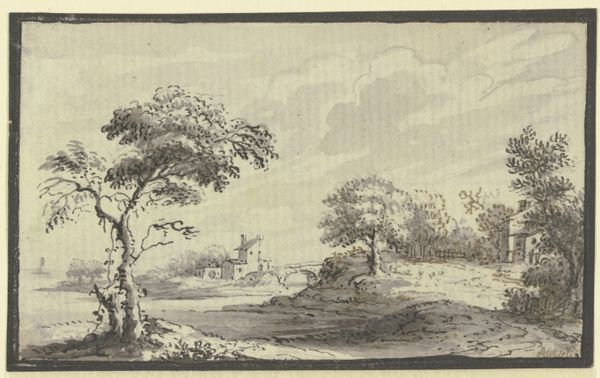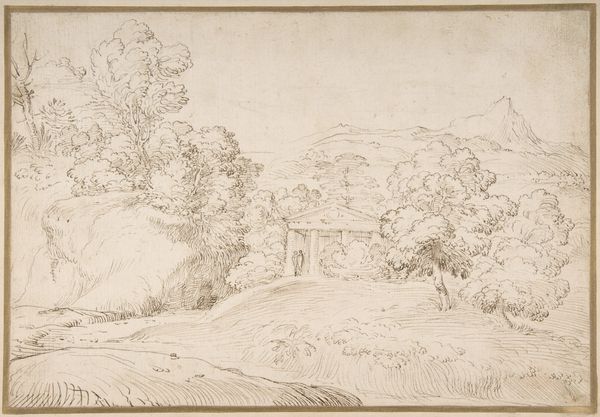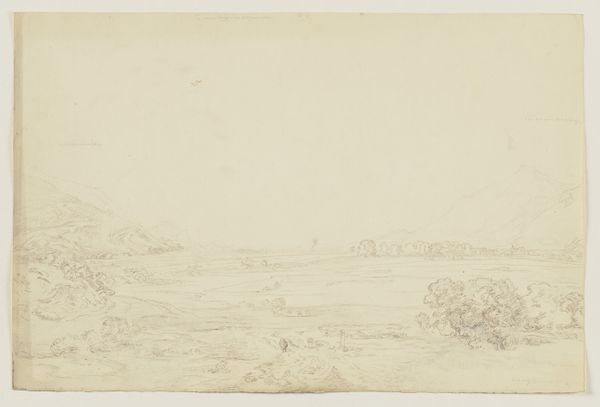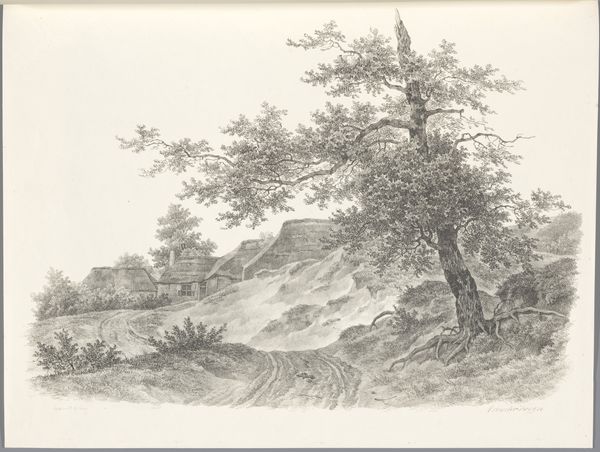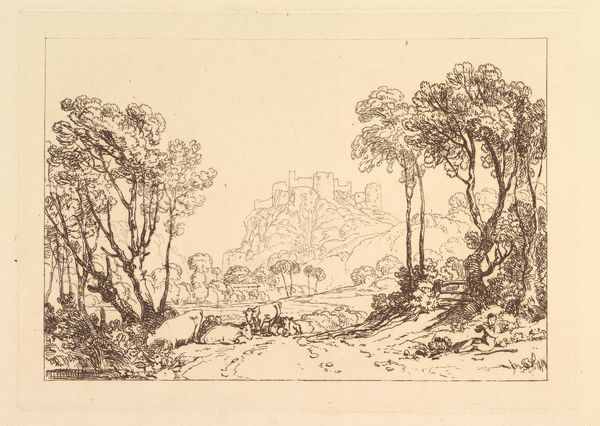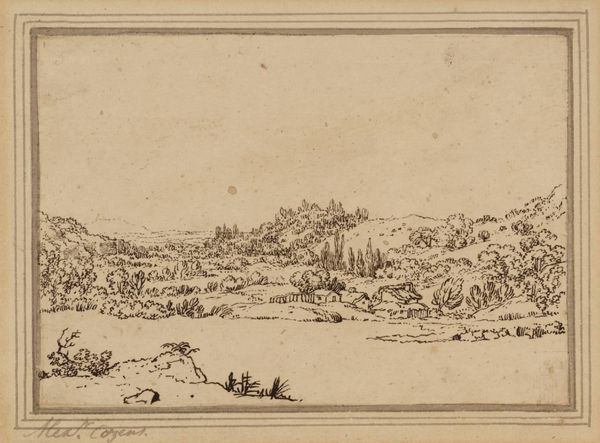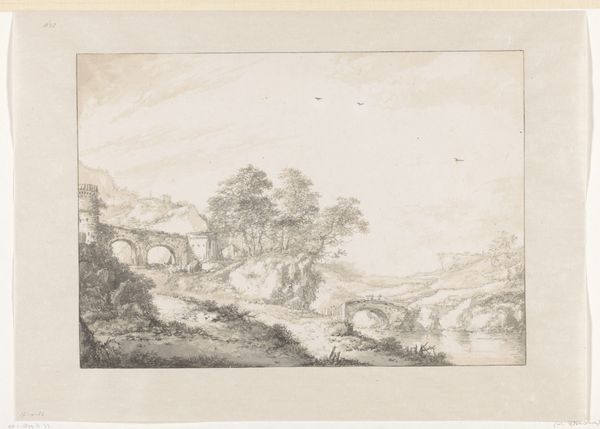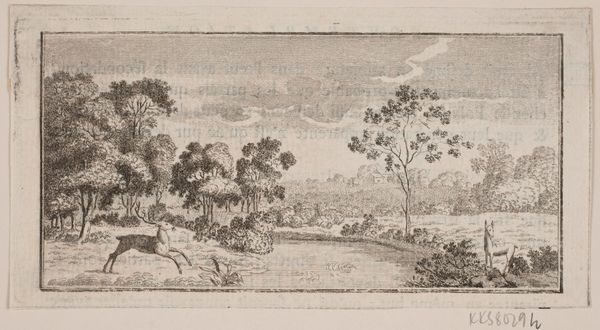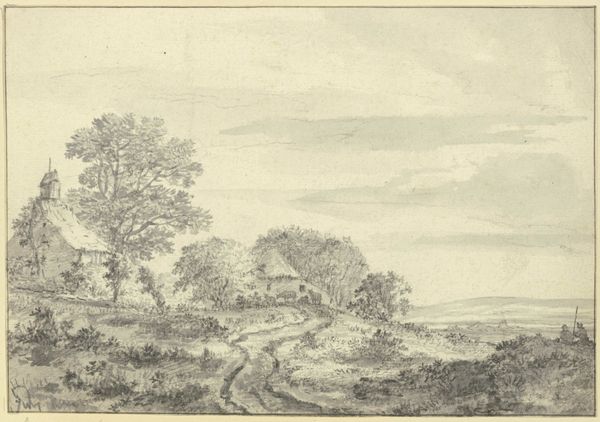
Dimensions: image: 25.72 × 35.72 cm (10 1/8 × 14 1/16 in.) sheet: 28.58 × 37.47 cm (11 1/4 × 14 3/4 in.)
Copyright: National Gallery of Art: CC0 1.0
Editor: This is Thomas Doughty's "Pennsylvania Landscape," likely created between 1810 and 1830, rendered in etching. It feels very… peaceful, almost idyllic. How do you interpret this work, especially given its time period? Curator: It's easy to see that sense of tranquility, but let’s consider this “idyllic” vision within a specific historical context. The early 19th century was a time of significant territorial expansion and displacement in the United States. How might Doughty’s portrayal of an untouched landscape reinforce certain power dynamics? Editor: So, you’re saying the image might not be as innocent as it appears? That it could be glossing over the realities of westward expansion? Curator: Exactly. This seemingly untouched landscape obscures the violent dispossession of Indigenous peoples that was happening simultaneously. This image naturalizes a narrative of settlement and ownership, erasing Indigenous presence and claims to the land. The “peaceful” vista is, in essence, a political statement about land and belonging. Does understanding that change your initial impression? Editor: It definitely does. I hadn't considered the politics embedded within the landscape itself. It makes you wonder whose perspective is being prioritized, doesn’t it? Curator: Precisely. And questioning perspective is essential. By looking at art through this lens, we can unpack the complex relationships between art, power, and social justice. What do you make of it now? Editor: It really changes the way I see landscapes of this period. I think I need to interrogate everything I see going forward. Thanks! Curator: It's a vital shift! It moves us towards a more critically conscious engagement with visual culture.
Comments
No comments
Be the first to comment and join the conversation on the ultimate creative platform.

